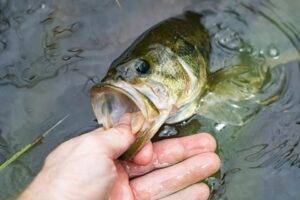
A lot of people enjoy the sport of fishing for the peaceful experience that it is. It’s not a hobby that has a restriction to just one season. It can be enjoyed throughout the year, regardless of the weather. The idea of spending a day in quiet solitude entices even in the bitter cold of the winter when it requires standing in frosty water for long hours waiting on a single nibble. But aside from wearing layers of clothing and heavy outerwear to keep your body warm, what kind of boots are going to stand up against the frigid ice.
Why Regular Boots Won’t Work For Ice Fishing
Each person who goes out on a fish expedition is going to have their preference when it comes to what brand and style of boot suits them. But when it comes to winter fishing, they will all agree that you need to invest in boots specifically designed for the ice. Regular boots are not going to withstand the wind exposure and the extreme temperatures, not to mention the need to actually walk across the frozen surfaces. Why are ice fishing boots superior to traditional boots and which are the best ice fishing boots?
- There is added insulation to keep your feet protected from the freezing weather.
- The boots offer soles with deep tracks and durability made to maintain an upright position when traipsing across a frozen surface without slippage.
- The design is such that your feet won’t get wet if you break through the ice into the water.
Tips For Buying Ice Fishing Boots
There is a vast array of brands, styles, and designs on the market for the boots. The choice is ultimately in what will suit your specific needs for the type of fishing that you’ll be doing and where. Not every boot is going to meet the comfort level of each fisher or provide the level of warmth and traction that those more advanced hobbyists may require. But ice fishing boots made with quality are going to offer common characteristics. These ice fishing tips will help you prepare.
- Proper insulation is not only imperative for the body but the feet as well. If you’re a novice, it is daunting to try to pick the adequate equipment for going out the first time. It’s a given that you will be out in frigid temperatures meaning all of your skin needs to be appropriately covered and thoroughly insulated. Often the body is well adapted, but the feet go by the wayside. It’s vital to ensure proper insulation for your boots as well.
There are a wide variety of ice boots with manufacturers producing some with built-in insulation and others using removable liners. Many boots consist of either wool or fleece-type materials meant to keep the feet warm and dry regardless of the temperature.
- There will be instances where the weatherproofing is going to withstand testing when the ice breaks and you’re standing in water. That is common with winter fishing making it truly important that you keep your feet from getting wet. In buying your boots, the waterproof capability is a critical aspect if you’re a fishing enthusiast. Once moisture gets on the inside of the boot and your feet become wet, this can be detrimental in the extreme weather.
There is no other option but the 100% waterproof footwear. As you maneuver through the sharp shards of ice and drill into the body of water, there should be no areas where water can penetrate the shoe. The quality waterproofing will make sure that your feet remain dry regardless of what you put them through. Follow https://adventure.howstuffworks.com/outdoor-activities/snow-sports/ice-fishing.htm to gain an understanding of how ice fishing works. 
- You may not realize how vital the height and weight of footwear are until you go on a fishing expedition. The long hours that you will spend walking and standing on the hard frozen-solid platforms could become tiring and uncomfortable depending on what type of shoe you’re wearing. That is why a lightweight option is crucial. A weighty choice is going to bulk you down and make it difficult to continue walking for any length of time. Size and weight are two different things entirely.
Not only are you going to keep heavier socks under the boot, but then if you add a heavy boot on top of that, you’ll be moving at a snail’s pace. Make sure that you have space in the boot for comfort as you walk. A good practice is to take the socks you plan to wear on the trip with you when you go shopping for footwear. Many fishers buy their boots a size larger than what they actually need to accommodate the socks.
If you plan to spend a day with areas of packed snow, the height of your boot should be pretty equal with your calf.
- Most people who buy any type of footwear want them to last a lot longer than just a few uses. That means that the material comprising it needs to be such that they are durable and can withstand longevity. A majority of ice fishing boots are rubber-based, which acts as a layer of protection. Heavy-duty material comprises the upper part of the shoe. Ideally, the inside of the boot will be soft for comfort during long hours of consistent walking.
The recommendation is that you should apply a powder to your feet before putting on your socks to go fishing. And the boots should not be preheated to avoid sweating. You don’t want your shoes to be too tight as to prevent proper circulation from occurring. Air needs to be able to get in to keep the feet from getting moist and sore.
Ice and snow are going to present challenges for walking, meaning the boot needs to provide appropriate traction to prevent any slippage. Test this out before you actually get into the more hazardous conditions where you’re at a higher risk for injury.
Buying a boot like this is an investment in your sport, meaning you should research and think it out before you engage. You want to buy a high-quality, durable pair the first time that will offer a long lifespan as opposed to needing to buy lower quality pairs frequently. And a better quality sock to go under them is a plus.










